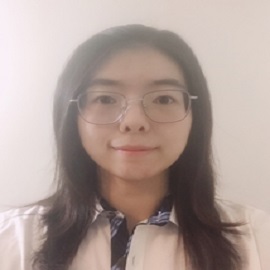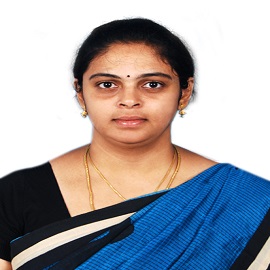Agenda
Conference Schedule
Day 1 full schedule
March 22, 2022 @ -
Enhanced Water Capture Capability and Regulated Condensation Droplet Distribution Induced with Electrowetting-on-Dielectric (EWOD)

Run Yan
Postdoctoral Research Asso.University of Missouri Columbia
USA
ABSTRACT
Electrowetting-on-dielectric (EWOD) devices with different electrode pattern designs which could enhances water capturing capability and regulated condensation droplet distribution is presented. By applying an electric field to the microfabricated devices, the wettability of the electrode areas is altered from hydrophobic to hydrophilic, which promotes droplet nucleation and growth, thereby improving water capturing capability. The results of the water harvesting study demonstrate that droplet coalescence is appreciably improved at the moments of plugging and unplugging DC voltage, which induces wipe-down events (when a droplet drips down the surface and removes all droplets underneath it). The EWOD effect was shown to improve water capturing capability for the 20 V, 40 V, and 60 V cases by 138.96%, 171.87%, and 220.43%, respectively. In the condensation experiment, side-by-side experiments with applied 40 V DC electric potential are carried out to compare droplet distribution between identically designed charged and uncharged devices. The uncharged devices show a random droplet distribution, whereas charged devices have a regulated distribution based on the designed patterns. The charged surfaces lead to a faster droplet growth rate and more dispersed droplet distribution. These works introduced a novel approach to actively influence water capture capability and droplet distribution on microfabricated condensing surfaces and indicates great potential for studies of improving the water harvesting and condensation heat transfer rates via EWOD.

Pradyumna Ghosh
ProfessorIIT
India
ABSTRACT
In the present scenario, high energy density devices need an efficient cooling mechanism for continuous operation. After the invention of nanofluids, researchers are seeking a superior alternative to replace the base coolant with nanofluids. In that context, nanofluid has been used to enhance the heat transfer rate and boiling heat transfer coefficient for different applications, because they have better heat transfer characteristics compared to normal coolants. However, nanofluid has some inherent problems like stability, agglomeration, corrosion& erosion, etc. In the last decade, many researchers experimentally proved that modified surfaces played a more prominent role, rather than nanofluid, in the enhancement of boiling heat transfer phenomena. In this present review, we have restricted ourselves for boiling heat transfer, using nanofluids, and boiling on nano-textured surfaces are going to be presented. Last but not least a comprehensive conclusions and a future roadmap will also be discussed.

Mohana Marimuthu
Women ScientistAlagappa University
India
ABSTRACT
It is well known that imprinted memory of Caenorhabditis elegans is highly capable to differentiate good and bad bacteria. Recently, it is identified that the dopamine signalling is one of the factors involved in the worms’ decision-making ability [1]. Thorough understanding of this neuronal signalling associated proteins and their link to worm behaviour during infection is understudied which is important for neuronal immunity research. Though microfluidic-based worm maze platform to study the sensory behaviour of C. elegans have been established before [2], still there is a gap to link worm’s decision making ability during infection with the key protein players associated to the dopamine signalling. This study demonstrates a simple microfluidic-based worm taxis platform to study the role of dopamine signalling upon infection using a transgenic C. elegans, BZ555 (Pdat-1:: gfp; green fluorescent protein [GFP] visible in dopaminergic neurons). Pathogenic infection (Vibro alginolyticus-VA and Staphylococcus aureus- S. aureus) of worms led loss of food sensing behaviour compared to opportunistic bacteria (Pseudomonas aeruginosa - PA01) (Figure 1a-c). Interestingly, kinetic fluorescent imaging of dopamine release revealed that both PA01 and VA infection caused an increase in dopamine release compared to OP50 (control) in C. elegans. In order to identify the interacting partners of the dopamine transporter, co-immunoprecipitation and LC-MS analyses (Figure 1d) was carried out. The human ortholog of dat-1 protein, solute carrier family protein, has been identified in all the three samples, which suggest that the interacting partners of dat-1 were successfully identified. Among the identified proteins, tax-4 and nsy-1 are the key protein players involved in association with dopamine signalling in the behavioural response during infection with PA01 and VA, respectively.

L. Sujatha
HODRajalakshmi Engineering College
India
ABSTRACT
In general, polymer microfluidic channels are fabricated using Soft Lithography Technique using PDMS. In this, the microchannel will be made with Poly Dimethyl Siloxane (PDMS) replica and it is bonded with the cover glass using oxygen plasma treatment. Hence, the microchannel will have PDMS on three sides and Glass on the bottom side. For some specific applications such as chemical gas analyzers, the microfluidic channel is coated with a functional layer like liquid stationary phase immobilization. These functional layers will have good adhesion or bonding with PDMS rather than glass. Also, to get an improved sensing area, it is preferred to have PDMS on all four sides. This can be achieved by bonding the PDMS replica on another PDMS block. For gas analyzers, these microfluidic channels are fabricated along with integrated heaters. Hence, the requirement is the minimum thickness of the top PDMS and the bottom PDMS blocks to reduce the thermal losses. This paper discusses the optimized process steps to make a thin PDMS film which is then bonded with the PDMS replica block. The highest challenge is to form a PDMS film that is as thin as possible but at the same time, it should be mechanically stable for the fluid flow without any leak. The MF device with PDMS on all four sides is fabricated and tested for leak testing with a dye-based solution. The derived process flow with optimized parameters leads to the fabrication of successful and repeatable leak proof MF devices with PDMS on all four sides.



